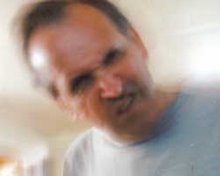Thursday, January 29, 2009
Fruit Brute it ain't.
Posted by
Joe's History Barn
at
8:04 PM
0
comments
![]()
Labels: Current Obsession. Cereal
Wednesday, January 28, 2009
Doesn't sound very good in the bowl . . .
Posted by
Joe's History Barn
at
8:29 PM
0
comments
![]()
Labels: Current Obsession. Cereal
3 Muskateers
I was gently reminded by a reader to cough up the names of the Cinnamon Toast Crunch bakers. Wendell, Bob and Quello.
Posted by
Joe's History Barn
at
8:19 PM
0
comments
![]()
Labels: Just so you know.
Tuesday, January 27, 2009
Really big shoe, really big . . .
Posted by
Joe's History Barn
at
7:02 PM
1 comments
![]()
Labels: Time out.
Monday, January 26, 2009
Curse you Red Baron
Posted by
Joe's History Barn
at
6:30 PM
0
comments
![]()
Labels: Current Obsession. Cereal
Thursday, January 22, 2009
"Pim! Pum! Pam!"
Have a nice day.
Posted by
Joe's History Barn
at
8:08 PM
0
comments
![]()
Labels: Current Obsession. Cereal
Wednesday, January 21, 2009
runs on anything.

Posted by
Joe's History Barn
at
8:23 PM
0
comments
![]()
Labels: On this day.
Tuesday, January 20, 2009
Where's Waldo?
Posted by
Joe's History Barn
at
8:05 PM
0
comments
![]()
Labels: Just so you know.
Monday, January 19, 2009
Danger! Will Robinson.
Posted by
Joe's History Barn
at
8:20 PM
0
comments
![]()
Labels: current obsession
Thursday, January 15, 2009
50 mo
Posted by
Joe's History Barn
at
6:09 PM
0
comments
![]()
Labels: music
Wednesday, January 14, 2009
rough day

Posted by
Joe's History Barn
at
6:23 PM
0
comments
![]()
Labels: passings
Tuesday, January 13, 2009
Stamp collector
Posted by
Joe's History Barn
at
6:45 PM
0
comments
![]()
Labels: Just so you know.
Monday, January 12, 2009
this ought to sell
Posted by
Joe's History Barn
at
7:06 PM
0
comments
![]()
turbo powered shorty
Sir Charles Algernon Parsons, developer of the steam turbine, tried his hand at many things. Oh, he was successful with the steam turbine, refining it and modifying it until it was a practical power source in increasingly power hungry industrial Britain.
Some of his ideas included a thing called an Auxetophone, a mechanical device for amplifying music. It sucked. he also came up with a method for making artificial diamonds, though not sucking never really worked. He went it this idea for over 30 years before giving up. He was on the right track but could not produce the pressures needed.
But what interests this writer is his model aircraft: a steam powered helicopter and airplane, both of which flew in 1893. He also built a steam powered go kart. Nice.
Posted by
Joe's History Barn
at
6:49 PM
0
comments
![]()
Sunday, January 11, 2009
I'm behind this technology
Posted by
Joe's History Barn
at
3:10 PM
2
comments
![]()
ketchup day
Posted by
Joe's History Barn
at
2:30 PM
0
comments
![]()
Labels: Time out.















